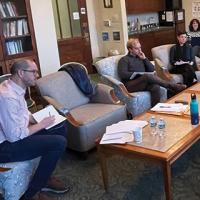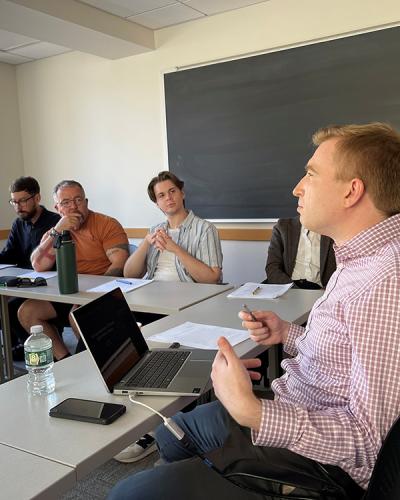On Friday, May 3rd Prof. Barbara Nagel (Princeton University) closed the IGCS’s Spring Colloquium Series with a paper titled “Goethe’s Stalker Snails.” The paper was part of a larger project that brings together rhetoric, affect theory, and gender and literature, building on Nagel’s previous work about the literalization of language in Der Skandal des Literalen: Barocke literaliserungen bei Gryphius, Kleist, Büchner (Wilhelm Fink, 2012). Nagel has also edited the collection Flirtations: Rhetoric and Aesthetics This Side of Seduction, published by Fordham University Press in May 2015. Her second monograph, Ambiguous Aggression in German Realism and Beyond: Flirtation, Passive Aggression, and Domestic Violence, will appear in October 2019 with Bloomsbury Academics' New Directions in German Studies series.
In the colloquium Nagel pursued the figure of the snail as a disturbing detail in Goethe’s writing, focusing on what she termed the ‘staggering materiality of the haunting snail.’ Nagel pointed out how in his Faust Goethe describes Gretchen with metaphors invoking the snail, which he also used in reference to his own youthful lover. While the snail has often been associated with the feminine and ‘virgin pregnancy’ in the Christian tradition, Nagel argued that in Goethe’s work this trope takes on a peculiar character of queerness and a-sexuality, giving rise to images that are located in a realm of ‘slimy’ materiality. Drawing on Samuel Weber’s work on the detail as both divine and devilish, Nagel pleaded for reading the many details of the snail occurring in Goethe’s writing in terms of parataxis and queer materiality. Much like the motif of the snail, Nagel’s paper itself featured stylistic circles of ‘sluggishness’t and haunting images of ‘stickiness.’ Much of the conversation considered further implications of Nagel’s work in a larger historical context that includes Goethe studies, gender studies and German studies. (Søren Larsen)





